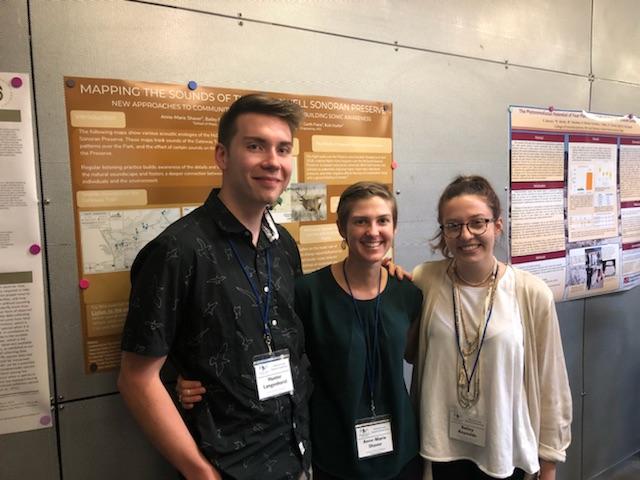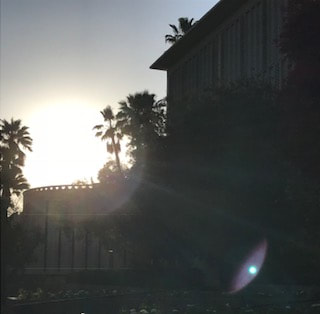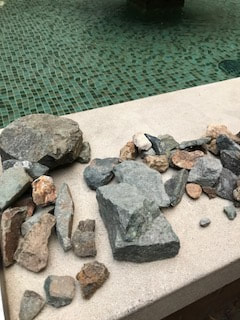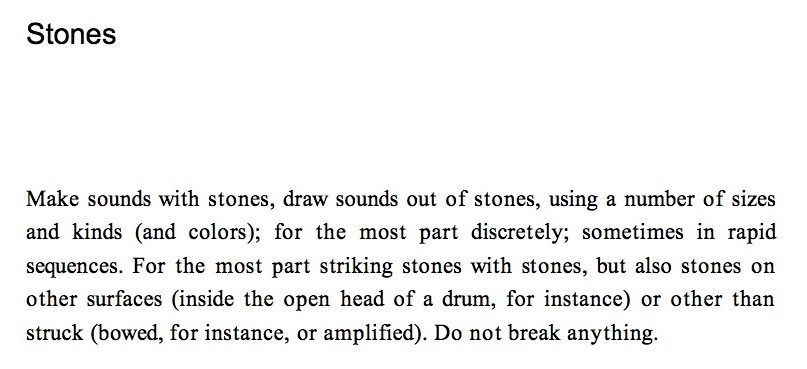The heat was a consideration in planning this walk (#Arizona), so any place with shade was an automatic draw. But the material providing the shade differed (awnings, buildings, canopies, trees, etc.), which meant the sound bounced off those surfaces in different ways. The material of a space and how it’s arranged around you are big factors in how sound moves. Using a bell to define those spaces can also be helpful on a soundwalk.
Another thing to contemplate is the surface that will be walked on. For this walk, I progressed from carpet, to cement sidewalks, to gravel, to grass, to a wooden bridge, to cement steps, and back to carpet. Each material reacts differently to being walked on, which can make one more aware of the sounds they personally make, and walking in a group creates a different experience as well.
Consistent sounds that punctuate a space are another thing to take into account. For example, building generators contribute to the overall sound of a space, sometimes quite noticeably, oftentimes humming at different pitches from another one nearby. Fountains (or any type of running water) are one of my favorite sounds to discover and highlight on a walk. It’s especially fun for me when two different examples from similar sound sources can be juxtaposed. In this specific case, the water running under a bridge was posited against a low-set fountain made from sleek marble-like materials. Collections of plants can also bring about wildlife noises, such as buzzing insects, scurrying lizards, or birdsongs.
Basically, the materials of a space are of great importance in relation to sound. This could be what a structure is made of, what shape it is (sharp corners or rounded edges), the flooring material, and the type of person or thing passing through the space. You may be surprised to discover how sonically rich even small spaces are.
8:05 - 8:40am
80s/90s, Sunny
Until next time!



